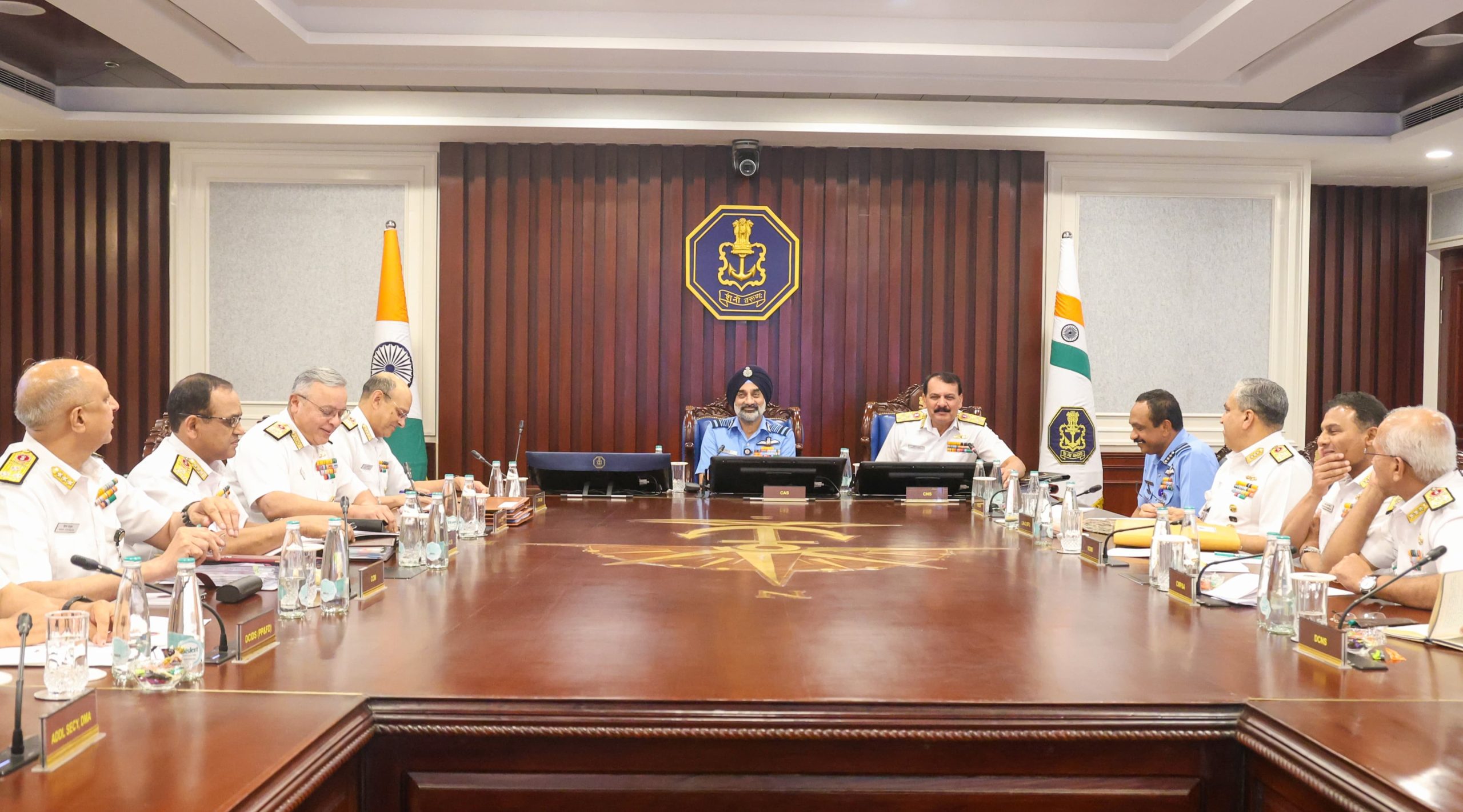Indian Navy Charts Bold Maritime Future at Naval Commanders’ Conference 2025
Conference concludes with vision for ‘MAHASAGAR’, naval modernisation, and India’s role as a preferred regional security partner
Maritime News, New Delhi, India : The first edition of the biannual Naval Commanders’ Conference 2025 concluded today in New Delhi, reaffirming the Indian Navy’s evolving role as the central pillar of maritime security in the Indian Ocean Region (IOR). Held in two phases—Karwar and New Delhi—from April 5 to 11, the apex-level meet brought together India’s top naval leadership, defence officials, and strategic thinkers to deliberate on operational readiness, regional collaboration, and the Navy’s path to becoming a Future Ready force.
“No Limit to Navy’s Roles and Responsibilities”: Defence Minister
Inaugurating the conference at Karwar, Hon’ble Raksha Mantri Shri Rajnath Singh underlined the Navy’s critical responsibility in ensuring peace across the IOR:
“Just like the oceans have no boundaries, there is no limit to Navy’s roles and responsibilities. The Indian Navy must assume full responsibility for the entire Indian Ocean Region.”
The opening day also witnessed the flag-off of IOS Sagar, a symbolic voyage that marks India’s strategic evolution from SAGAR (Security and Growth for All in the Region) to MAHASAGAR (Mutual and Holistic Advancement for Security Across the Regions)—a comprehensive vision for regional security, cooperation, and shared maritime growth.
Project Seabird Boosts Naval Infrastructure at Karwar
During his Karwar visit, Shri Rajnath Singh inaugurated:
- Nine modern marine piers
- Eight new residential complexes
- Several utilities under Project Seabird
These additions significantly strengthen India’s largest naval base under construction and reflect the Navy’s commitment to infrastructure, welfare, and readiness.
Phase Two in Delhi: Focus on Tri-Service Synergy and Strategy
The second leg of the conference began on April 7 at Nausena Bhawan, chaired by Admiral Dinesh K Tripathi, Chief of the Naval Staff. Discussions revolved around:
- Operational and logistics preparedness
- Modernisation and training needs
- Human resource development and welfare
- Strategic doctrines and space-based naval capabilities
Key publications released included:
- Indian Navy’s Space Vision
- Indian Naval Air Publication
- Operational Data Framework
- ‘Navy for Life and Beyond’ – a dedicated compendium for veterans
Strategic Convergence Across Forces and Ministries
Naval Commanders held detailed sessions with Chief of Defence Staff, Chief of Army Staff, and Chief of Air Staff to evaluate Tri-Service convergence, strengthening readiness against evolving threats in the Indo-Pacific and beyond.
They were also joined by:
- Vikram Misri, Foreign Secretary – who shared insights into shifting global dynamics
- Amitabh Kant, India’s G20 Sherpa – who reinforced the Navy’s role in economic and diplomatic strategy, calling it a vital force in India’s rise as a Preferred Security Partner in the region
Sagar Manthan: The Strategic Heartbeat of the Conference
The special Sagar Manthan session on April 7 featured leading strategists, policymakers, and Navy brass exchanging ideas on how India’s maritime doctrine under MAHASAGAR can fuel national progress and ensure a rules-based maritime order.
This think-tank style event reflected the Navy’s increasing focus on collaborative innovation, strategic foresight, and civil-military synergy.
A Future-Ready, Combat-Ready Naval Force
The week-long conference reaffirmed the Indian Navy’s vision to be a Combat Ready, Credible, Cohesive, and Future-Ready Force amid rapidly shifting geo-political tides and growing regional security responsibilities.
As India continues to project itself as a maritime power of consequence, the outcomes of this conference are expected to guide naval doctrine, investments, and partnerships for years to come—anchored in a commitment to safety, sovereignty, and strategic balance in the Indian Ocean and beyond.




